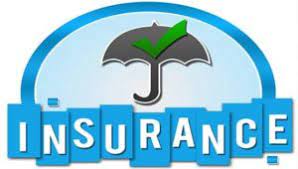Private mortgage insurance (PMI) safeguards lenders against the risk of loan default on homeowner loans. Lowering lender risk can result in lower interest rates and easier access to credit for borrowers, but it can also dramatically increase the cost of a mortgage. Here’s how you get a house mortgage while you avoid or at least mitigate PMI (private mortgage insurance) with or without a 20 or 10% down payment.
What is PMI?
Private mortgage insurance (PMI) is a type of insurance required by conventional mortgage lenders when a homebuyer puts down less than 20% of the purchase price.
PMI is intended to safeguard the lender in the event of a loan default by the homeowner. While it does not prevent foreclosure, it does allow potential homebuyers to become homeowners even if they cannot afford a 20% down payment. If your lender deems that you will need to pay PMI, it will work with a private insurance provider, and the terms of the insurance plan will be communicated to you before you close on your mortgage.
If you have PMI, the fee will not be with you indefinitely. You can contact your loan servicer about removing PMI from your mortgage once you’ve reached 20 percent equity — either by paying down your loan debt over time or by growing home values. PMI must be terminated by servicers when your loan balance reaches 78 percent of the home’s original value.
What is the cost of PMI?
According to the Urban Institute, the typical range for PMI premium rates is 0.58 percent to 1.86 percent of the original loan amount. According to Freddie Mac, most borrowers will pay $30 to $70 per month in PMI rates for each $100,000 borrowed. The cost of PMI is determined by two major factors:
- Your loan-to-value (LTV) ratio – The amount you put down will influence how much PMI you pay. For example, if you put down 5%, your LTV ratio would be 95%. Your LTV ratio would be 85 percent if you put down 15%. When you only have a tiny down payment, the lender assumes a greater risk, and your PMI payments will be higher to compensate.
- Your credit rating – The cost of PMI is heavily influenced by your credit history and credit score. Consider the Urban Institute’s example of someone purchasing a $250,000 home with a 3.5 percent down payment. The monthly mortgage payment, including insurance, is $1,164 with an exceptional FICO score of 760 or higher. Monthly payments are $1,495 for a buyer with a credit score between 620 and 640, reflecting a much higher PMI fee.
Here’s how PMI might work depending on how much you put down, as calculated by the Freddie Mac mortgage insurance calculator and the Bankrate mortgage calculator. These figures are based on a $329,000 purchase price and a 3.25 percent interest rate and do not include homeowners insurance or property taxes.
| Down payment | 5% down | 15% down | 20% down |
| Monthly PMI payment | $300 | $78 | $0 |
| Monthly mortgage payment (principal, interest, and PMI) | $1,660 | $1,295 | $1,145 |
Different Types of PMI
There are different types of private mortgage insurance. They include
#1. Borrower-paid mortgage insurance
The premiums for borrower-paid mortgage insurance are included in your monthly payment. The principal balance, interest charges, and other fees such as property taxes will also be included. The money is then disbursed to the insurer on a monthly basis.
Each month, you’ll notice an indication of a “special payment,” which is merely an explanation that the money was paid out.
Borrower-paid mortgage insurance premiums may be removed if you achieve certain criteria, such as achieving 20% equity, a 78 percent loan-to-value, or completing half of your payment term.
#2. Lender-paid mortgage insurance
Lender-paid mortgage insurance may appear tempting, but make no mistake: you will still be responsible for the coverage. Instead of viewing that premium as a line item, you’ll most likely pay a higher interest rate on the mortgage and/or pay additional loan origination expenses.
Another disadvantage is that lender-paid PMI cannot be canceled in the same way that borrower-paid insurance can. The most common way to get out of lender-paid PMI is to remortgage.
#3. Single-premium mortgage insurance
Instead of separating payments into monthly installments, single-premium PMI combines the total cost of the insurance into a single payment.
Depending on the loan terms, you can pay this in full at closing or roll it into the loan for a higher sum.
If you pay it all at once, your monthly payments will be reduced. However, if you sell your house soon after purchasing it, you may end up worse off than if you had simply paid monthly PMI.
Consider that if you’re struggling to make a 20% down payment, you might not be able to afford a significant upfront insurance payment.
#4. Split-premium mortgage insurance
In a split-premium PMI agreement, you will pay a higher upfront price that will cover a portion of the costs, allowing you to reduce your monthly payment requirements.
This combines the advantages and disadvantages of single-premium and borrower-paid PMI. You’ll need some money, but not as much as you think to pay the upfront charge. You will then enjoy cheaper monthly charges.
If you have a greater debt-to-income ratio, split-premium mortgage insurance may be beneficial. It allows you to avoid your possible mortgage payment in order to keep your DTI from becoming too high to qualify.
#5. FHA mortgage insurance
An FHA loan includes this form of mortgage insurance. It entails an initial payment followed by annual mortgage insurance charges (MIP), which cannot be canceled in most cases.
You’ll have to wait 11 years to get free FHA mortgage insurance without refinancing. Even then, the insurance will only be canceled if your initial down payment was 10% or greater.
Read Also: PIGGYBACK LOAN: Definition, Pros, Cons & Refinancing Options
Ways to Save Money and Avoid Paying Private Mortgage Insurance PMI
Given how expensive private mortgage insurance PMI may be, it’s no surprise that many homebuyers want to avoid it. Here are five strategies to avoid paying private mortgage insurance PMI on your mortgage.
#1. Look for a loan that does not demand PMI.
Look for loan options that waive the PMI requirement and/or provide down payment help. For example, VA loans do not require PMI, so you may save a lot of money if you qualify. Examine loans guaranteed by the Federal Housing Administration (FHA) or the United States Department of Agriculture (USDA). Both organizations offer initiatives that try to make homeownership more accessible for low- and middle-income purchasers.
#2. Look into state and local homebuyer programs.
More cities are prioritizing affordable housing, including the creation of new programs to aid home purchasers. Some cities concentrate on “workforce housing,” which aims to make homeownership accessible for those who work in specific occupations, such as school teachers, firefighters, or first responders. You might begin by searching HUD’s local homebuying page for programs in your state.
#3. Seek out an 80-10-10 loan.
According to Eric Simonson, founder of Abundo Wealth, one approach to avoid private mortgage insurance PMI is to obtain an 80/10/10 loan in which you put 10% down and take out a 10% home equity line of credit to satisfy the 20 down payment requirement. Simonson advises that because the line of credit is likely to be variable, you should prioritize paying it off as quickly as possible. If you’re not sure where to go for a lender that offers 80/10/10 loans, talk to your accountant or financial advisor, who can probably make some suggestions.
#4. Make a higher interest payment
In exchange for a higher interest rate, some lenders provide loans that allow you to avoid paying PMI. There will be a qualification process, but if approved, you will be able to put down less than 20%. However, your monthly mortgage payment will be higher—in some cases very higher—due to the increased interest rate.
#5. Purchase a less expensive home
Just because you’ve been pre-approved by a lender for a certain amount doesn’t mean you have to spend it all when you buy a house.
“I normally don’t recommend utilizing PMI to buy a larger home that stretches your budget, because any glitch in your life might make your mortgage tougher to pay and add a lot of stress,” says DRS Financial Partners founder Stanley Himeno-Okamoto.
A more savvy strategy for a first-time homebuyer could be to purchase a “starter house,” which is a less expensive home that they can comfortably afford without incurring PMI.
PMI Alternatives
Borrowers with a modest down payment frequently inquire, “Are there alternatives to PMI?”
The key distinction between this query and the “How can I avoid PMI?” inquiry is that alternatives frequently have the same cost but are presented differently.
A jumbo loan in excess of $417,500 is an example of this.
Some jumbo loans require less than 20% down and do not require mortgage insurance. This will be advertised as a solution to avoid a PMI. However, you won’t necessarily save money in terms of fees because you’ll pay a higher rate on this loan – just like you would with Lender Paid PMI on a conforming loan.
So, while it is technically an alternative to mortgage insurance, you are not avoiding the expenses. This is obvious in the marketing of a conforming loan with Lender Paid PMI, but it is less obvious when getting a jumbo loan with less than 20% down because these loans are typically sold with phrases like “no mortgage insurance.”
Cancelling PMI
If you have a standard conforming loan, you can usually ask your lender to consider canceling your mortgage insurance once you have achieved 22 percent equity in your house, which means your loan has been paid down to 78 percent of the purchase price of your property.
If you believe you will reach this level within a reasonable number of years, Borrower Paid PMI is preferable to Lender Paid PMI.
So, if you have Lender Paid PMI, your mortgage insurance comes in the form of a higher loan rate, and this higher cost is thus with you for the life of the loan. The same is true with a jumbo mortgage, as there is no mortgage insurance premium for low-down jumbos, but the rate is higher.
How can I avoid PMI without a 20 percent down payment?
If you choose lender-paid PMI, you can avoid paying PMI without putting down 20 percent. However, you will have a higher mortgage rate for the duration of the loan. That’s why some borrowers prefer the piggyback technique, which involves using a second mortgage loan to finance a percentage of the 20 percent down payment required to avoid PMI. The VA loan program allows veterans to avoid PMI with no down payment.
How Can I Avoid Private Mortgage Insurance (PMI) With a 10% Down Payment?
If you have a 10% down payment, you may be able to avoid PMI if you use a second loan to fund the remaining 10% of the home’s purchase price. Combining these will satisfy your first mortgage lender’s 20 percent down payment requirement, allowing you to avoid PMI. This is known as an 80/10/10 piggyback loan.
Is it worthwhile to avoid PMI?
PMI is an excellent resource for first-time home purchasers. It enables you to make a very little down payment and move into a property much sooner. As a result, for many house purchasers, PMI is a beneficial investment, especially if it means purchasing a home sooner rather than waiting years to put up a 20% down payment.
How can I avoid PMI with a 5% down payment?
Some borrowers may be able to find unique loan programs that provide low-down-payment mortgages with no PMI. Most of these programs have income limits or other particular eligibility requirements. Even if you can’t find a program that removes PMI, you might be able to qualify for Freddie Mac’s Home Possible or Fannie Mae’s HomeReady loan, which allows you to buy with just 3% down and pay less in PMI.
What credit score can allow you to avoid PMI?
A better credit score should result in cheaper PMI premiums. However, a high credit score will not eliminate the need for PMI. Instead, it is the size of your down payment that allows you to avoid PMI. Putting down 20 percent will help avoid PMI entirely.
Conclusion
PMI premiums can increase a homebuyer’s monthly mortgage payment by hundreds of dollars. And it’s difficult to avoid private mortgage insurance PMI unless you have 20% down or just wait until the loan total is less than 80% of the home’s value due to principal payments and home value appreciation. However, there are other choices, including as down payment aid, VA loans, piggyback loans, and doctor loans. Not all lenders provide programs that allow borrowers to avoid PMI and those that do have less favorable conditions or greater expenses. And PMI isn’t the only thing to think about when borrowing a property. Interest rates, fees, loan terms, and other considerations might all be just as essential, if not more so.
How To Avoid PMI FAQs
When can PMI be waived?
When the principal balance of your mortgage is anticipated to decrease to 80 percent of the initial value of your house, you have the authority to request that your servicer eliminate PMI. When you acquired your mortgage, you should have received this date in writing on a PMI disclosure form.
Is PMI worth avoiding?
Getting rid of PMI might lower your monthly payments and make your property more affordable.
Does credit score affect PMI?
Yes, your credit score has an impact on the cost of private mortgage insurance. Even with the same down payment and mortgage amount, a borrower with a higher credit score will generally pay a smaller monthly charge for PMI than someone with a lower credit score.
Related Articles
- What Is Mortgage Insurance and When Do You Need It?
- What Is Mortgage Insurance Premium? How It Works
- How to Calculate Home Equity with Practical Examples & All You Need
- MORTGAGE PROTECTION INSURANCE (MPI): How It Works
- Zillow Mortgage Calculator: How Accurate is Zillow Mortgage Calculator? (+ Quick Tips)
- MORTGAGE INSURANCE: Detailed Guide






